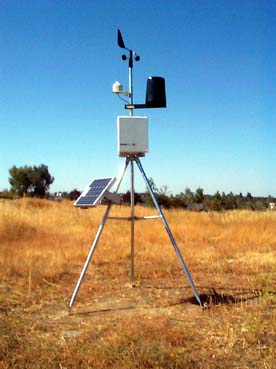This tweet got me to thinking about the myriad uses of technology used for rather simple things.

For example, the weather. The National Weather Service has set up climate observation stations throughout the US, at places like airports, on top of tall buildings, alongside freeways, random places in the countryside, even on ships and buoys in the ocean. These monitor the temperature, humidity, and a bunch of other things of that nature. Sometimes they’re integrated into the overall system, like at an airport tower, sometimes they’re just self contained boxes mounted somewhere with power, like on a freeway sign or beside the road. Anyway, these boxes record this information and generally use radio transmitters to send updates back to some centralized location in each region. Usually a local university, TV station, NWS local offices, etc.
This information is then sent on to the next stop via various methods. As the technology evolved, old methods like phone lines got replaced with the internet, or on other more secure lines. They call this overall system The Gateway, and it has its own special protocols and methodologies along with it as well. Anyway, the data is sent back to the NWS’s central server center somewhere. Probably in DC, although they likely have multiple redundancy in various other locations. This information is naturally combined with all the other information from all over the world, so that a complete up-to-date system of meteorlogical data of the entire world can be maintained.
Thousands of other organizations read from this data via various protocols of their own. For example, The Weather Channel gets a lot of their information from this large, distributed, database via some kind of real time feed. They even re-serve the data themselves using various formats, such as the XOAP system.
That XOAP system is interesting because it’s a pretty good feed of weather related data for various regions. I use it myself, indirectly. On my iPhone, for example, I have the Typophone Weather application, which uses the 3G network (which is itself a highly connected system of radio towers using multi-spectrum packet switching technologies), to connect to the internet (this big system of pipes which is in reality not all that well put together but nevertheless works because of incredible fault tolerance in its various protocols), in order to query that XOAP system (which uses XML and SOAP standards for its interface).
All this happens in order to display the current temperature on my iPhone’s lock screen, while I sit here on a couch, not four feet from a friggin’ window.
The future is awesome.



